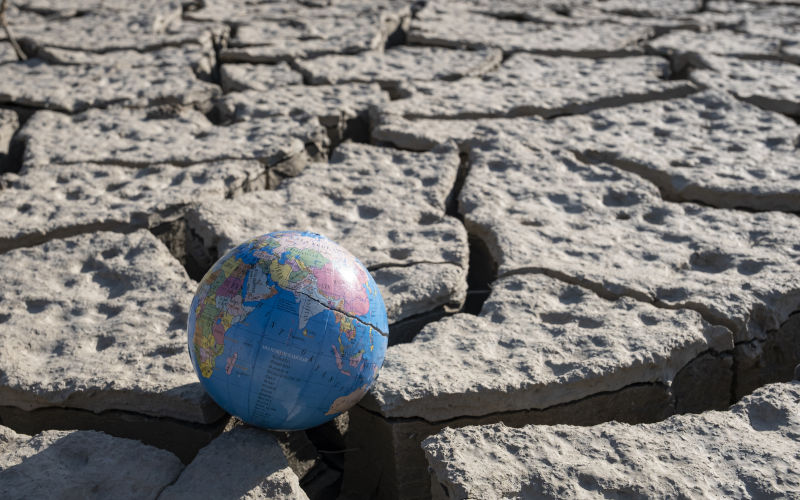Environment: climate change colonialism
April 22, 2023
Wealthy developed countries worsen the climate and debt crises of poor countries and trample on the rights of their Indigenous peoples.
Quiz time
Lets start with a question. What is 60% water in wombats, 75% water in humans and 90% in cows?
Poor countries in vicious cycle of climate crises and debt crises
ActionAid describes how the foreign debt crisis and the domestic climate crisis being experienced by many poor countries reinforce each other and exacerbate global climate change.
First, the colonisers invaded the lands of Asia, Africa and South America, oppressed and exploited their people and plundered and exported their natural resources. Then, eventually, the colonisers walked away from the political and social mess theyd made while carefully ensuring that the newly liberated countries remained economically dependent. The consequence of this has been that over the last 60 or so years many poor countries have accumulated massive foreign debts.
During the whole colonial and post-colonial history, at home the colonising countries were belching out the greenhouse gases that have created global warming. Adding insult to injury, their ex-colonies are now the countries that are simultaneously exposed to climate changes greatest threats, the ones that have done the least to create it and the ones have the least resources to respond to it. Even worse, when the wealthy ex-colonisers provide financial assistance to the still poor ex-colonies to promote economic or social development, it is mostly provided as loans which further increase the countrys foreign debt and exacerbate their inability to respond adequately to climate change.
It’s at this point, however, that the vicious cycle really gets going. The International Monetary Fund insists that servicing foreign debt, which mostly has to be paid in foreign currency, has the first call on an indebted countrys government revenue. This forces the country to focus on developing an export-oriented economy that earns foreign currency as quickly as possible. Extractive industries are often the best way to do this: for instance, mining fossil fuels and minerals and producing commodity exports such as timber, soya and palm oil, accompanied by deforestation and industrial-scale agriculture. What do these sorts of industries do as well as generate income? generate greenhouse gases!
Servicing the foreign debt also prevents developing countries from pursuing a more environmentally sustainable path of development and from funding much needed public services. Research indicates that when governments spend more than 12% of their revenue servicing foreign debt, they tend to cut funding to essential domestic services such as health and education. According to ActionAid, there are at least 30 climate vulnerable countries that also have a debt crisis that are directing more than 12% of their revenue to servicing foreign debt; at least 9 countries are using 30-60% of their revenue in that way.
Within the climate- and debt-plagued countries, women end up being triply disadvantaged by the loss of public services. They are the first to lose access to public services, the first to lose frontline public service jobs, and the first to take on the burden of unpaid family and community care when services are withdrawn and when the country is hit by extreme weather events and other disasters.
To help developing countries break out of the spiral of the debt crisis worsening the climate crisis worsening the debt crisis which further worsens the climate crisis and exacerbates global climate change, ActionAid recommends:
- Restructuring the financial assistance that is provided to poor countries away from loans to grants. This would help them develop renewable energy and agroecology, support smallholder farmers, improve health and education services, and improve services and support for women without building up further debt.
- Promote international tax justice to raise funds to provide greater financial assistance to poor countries, e.g. a 5% wealth tax on super-rich millionaires and billionaires, windfall taxes on the excess profits of fossil fuel companies, taxing big tech companies, taxing air travel, a Financial Transactions Tax, global tax rules to reduce tax avoidance and illicit financial flows. (Id add eliminating subsidies to fossil fuels.)
- Cancel the current foreign debts. Otherwise, additional financial aid provided to poor countries is likely to disappear paying the interest on their existing crippling foreign debts.
Protecting biodiversity by killing Indigenous people
To protect biodiversity worldwide, the 30X30 initiative aims to protect 30% of the planets land and oceans by 2030. This is, of course, a much needed and laudable goal but if past and current practices are a guide, much of this protection will occur on the lands of Indigenous peoples and come at the expense of their homes and lives. It is estimated that in the last century, close to 20 million Indigenous people have been evicted from their homes and lands for conservation projects.
In comic strip style, Grist tells the stories of racism and violence that have accompanied the establishment of national parks in the USA and the Democratic Republic of the Congo (DRC).
President Lincolns role in the protection of Yosemite Valley and later John Muirs in the creation of Yosemite National Park are well known, revered even. Less recognised is the genocide and dispossession inflicted on the Yosemite Valleys Indigenous Miwok population over 150 years from the middle of the 19th century.
Kahuze-Biega National Park was established in 1970 in the DRC. Unfortunately, this has involved fortress conservation, the violent expulsion of the native Batwa by armed forces, supported in part by foreign funders. Ironically, foreign tourists and conservationists are encouraged to enter the park and are a source of much needed income (see previous story), although who pockets it is another matter.
Jos Francisco Cal Tzay, the UN Special Rapporteur on the Rights of Indigenous Peoples, said, Not enough assurances have been given to Indigenous peoples that their rights will be preserved. The real drivers of biodiversity decline, such as industrialisation, over consumption, and climate change, must be addressed. Simply enlarging the global protected area surface without ensuring the rights of Indigenous peoples dependent on those areas is not the solution.
These stories highlight the risk that in the 21st century, just like the 19th and 20th, richer, more powerful societies will again trample on the rights and expropriate the lands and lives of Indigenous peoples. The goal may be more laudable this time around but the acts are equally reprehensible and unacceptable. Ways must be found to protect both the environment and Indigenous peoples.
IPCC synthesis report
I thought Id said all I wanted to say about this a few weeks ago but Ive come across 10 Big Findings from the 2023 IPCC Report on Climate Change from the World Resources Institute. If youve been wanting to get to grips with the IPCCs most recent jeremiad but its all seemed too much, this is the summary for you. You can read the whole thing in 15 minutes but if even that sounds too daunting, you could just look at the heading and the tremendous graphic provided for each of the Big Ten findings - the one below is from number 5, Global GHG emissions peak before 2025 in 1.5 degrees C-aligned pathways.
NYT answers your climate change questions
I think I mentioned this New York Times initiative that invites readers to send in a climate change question and someone on the Timess climate desk answers it when it was started a year or so ago. There were about six Q&As on the website then, now there are 50. The answers are mostly a digestible 200-400 words and are grouped into The science, What can I do?, Solutions and geopolitics, Extreme weather, Technology and Deciphering the jargon.
I suspect that many P&I readers are already across most of the topics but if someone asks you to recommend a reliable source of information on climate change, this may be worth considering. Dont waste your breath pointing sceptics towards it though. I personally refuse to engage with them lifes too short to waste any of it on climate deniers.
Answer time
No, it isnt a model of Stonehenge, its wombat poo. But you all knew that.
What we now also know as a result of the research of Dr Scott Carver at the University of Tasmania is where exactly in the wombats intestine it is produced and why its shape is so cubic and so consistent. Its all due to the drying of the sloppy faeces as they pass through the large intestine. Remarkably, the drying of the wombats faecal slurry produces results similar to the cooling of volcanic lava at places such as the Giants Causeway in Northern Ireland and the rocks at Fingal Head near the mouth of the Tweed River in northern NSW. Both the drying of faeces and the cooling of lava involve a shearing flux process that creates regular cracks and regular shapes. The wombats dont know how lucky they are that the cracking produces structures with rounded corners!




